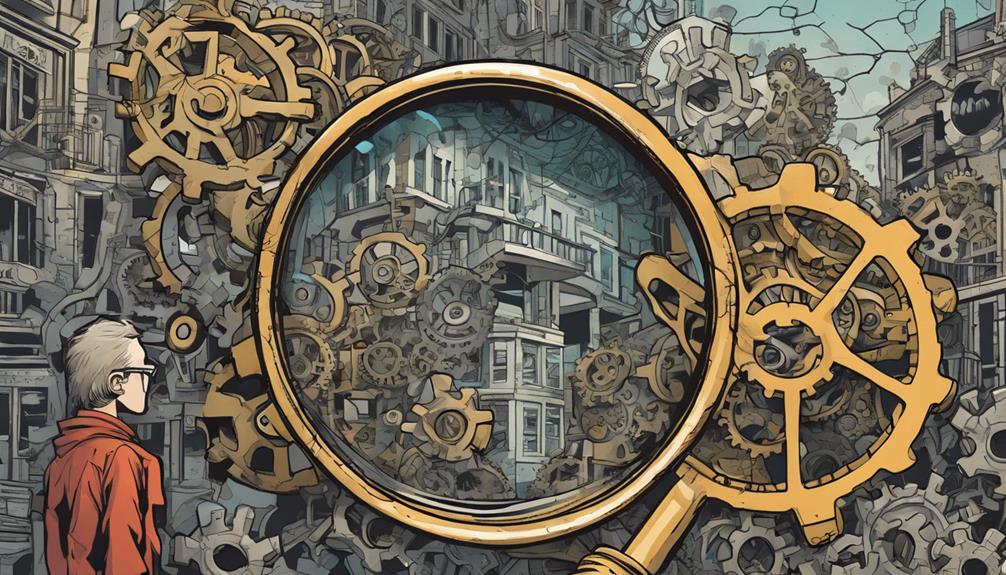Structural unemployment happens when your skills don't match the jobs available, often due to technological changes or industry shifts. This long-term joblessness affects many workers, leading to fierce competition for limited positions. Factors like outdated education or business relocations make it even worse. By focusing on continuous learning and networking, you can adapt to the evolving job market. Staying informed about industry trends is vital for enhancing your employability. Understanding this complex issue can help as you navigate your career path, and there's much more to discover about effective strategies to tackle structural unemployment and thrive.
Key Takeaways
- Structural unemployment is a long-term issue caused by a mismatch between worker skills and evolving job market demands due to technological advancements.
- It differs from other unemployment types, such as cyclical and frictional, necessitating unique strategies for mitigation and adaptation.
- Key causes include technological automation, lack of education, relocation of businesses, and increased competition from outsourcing.
- Individuals can combat structural unemployment through continuous education, skill development, and active networking to stay relevant in the job market.
Definition of Structural Unemployment
Structural unemployment refers to the long-term joblessness that arises when specific skills and positions become obsolete due to shifts in industry and technology.
You might find yourself in this situation when your skills no longer match the needs of the job market. This mismatch often leads to prolonged unemployment, leaving you to compete with others who've also been affected.
The impact can be significant, causing anxiety and uncertainty about your future. As industries evolve, it's essential to stay informed about emerging trends and adapt your skills accordingly.
Types of Unemployment

Unemployment can be categorized into several types, each with distinct causes and implications for the workforce.
First, there's cyclical unemployment, which rises during economic downturns and falls during recovery periods.
Then, you have frictional unemployment, occurring when individuals voluntarily leave their jobs, often signaling a healthy job market.
Natural unemployment combines both structural and frictional factors, reflecting the balance between job seekers and available positions.
Finally, structural unemployment stands out due to its long-term nature, arising from shifts in industry demands.
Understanding these types helps you navigate the job market effectively, adapt your skills, and prepare for potential challenges ahead.
Each type of unemployment requires different strategies for mitigation and adjustment, emphasizing the importance of continuous learning and flexibility.
Causes of Structural Unemployment

Understanding the factors that lead to structural unemployment helps you recognize how shifts in the economy and job market can impact your career opportunities.
One major cause is technology; automation often replaces jobs, like cashiers, with machines.
Additionally, a lack of education can leave workers with obsolete skills, especially when companies fail to offer growth opportunities.
Relocation of businesses can also create unemployment for specialized workers, while economic changes can render entire industries, such as frozen yogurt shops, unnecessary.
Finally, increased competition from outsourcing to cheaper labor markets can exacerbate structural unemployment.
Staying aware of these factors enables you to adapt your skills and navigate your career effectively in a constantly evolving job landscape.
Economic Implications

The economic implications of structural unemployment can ripple through various sectors, affecting not just individual workers but entire communities and industries. You might notice these effects manifesting in several ways:
- Reduced Consumer Spending: When people can't find jobs, they spend less, impacting local businesses and slowing economic growth.
- Increased Social Costs: Prolonged unemployment can lead to higher demand for social services, putting a strain on government resources and taxpayers.
- Skill Mismatch: As industries evolve, a lack of relevant skills among workers can inhibit innovation and productivity, hindering overall economic progress.
Understanding these implications helps you grasp the broader economic landscape and reinforces the importance of staying adaptable in a changing job market.
Strategies to Mitigate Unemployment

Mitigating unemployment requires proactive strategies that enhance skills and adaptability in an ever-evolving job market. To stay competitive, you should focus on continuous learning and networking. Here's a quick reference table to guide your efforts:
| Strategy | Action Items | Benefits |
|---|---|---|
| Pursue Education | Take courses or certifications | Increases job market value |
| Research Trends | Follow industry news | Keeps skills relevant |
| Continuous Development | Attend workshops and seminars | Boosts adaptability |
| Network Effectively | Join professional groups | Opens up job opportunities |
| Stay Informed | Monitor job market statistics | Informs career decisions |
Role of Education and Training

Education and training play an essential role in equipping individuals with the skills needed to adapt to shifting job markets and combat structural unemployment.
To thrive in a competitive landscape, you should focus on three key areas:
- Skill Development: Pursue relevant courses and certifications that align with industry demands to enhance your employability.
- Lifelong Learning: Embrace continuous education to stay updated on emerging trends and technologies, ensuring your skills remain relevant.
- Networking Opportunities: Engage with professionals in your field to share knowledge, discover job openings, and gain insights into market needs.
Impact of Technology

Rapid advancements in technology are reshaping job markets, often leading to structural unemployment as certain skills become obsolete. You might notice how automation, like self-checkout machines, replaces the need for cashiers. If you don't adapt to these changes, your skills could quickly become irrelevant.
Additionally, industries are evolving, and jobs that once thrived may vanish overnight, leaving workers scrambling to find new roles. Embracing continuous learning and upgrading your skills is essential to stay competitive.
Importance of Networking

Networking plays an essential role in your career development, opening doors to opportunities that might otherwise remain inaccessible.
By building connections, you can enhance your chances of finding jobs in a competitive market.
Here are three key benefits of networking:
- Access to Hidden Job Markets: Many positions are filled through referrals rather than traditional job postings, making your network invaluable.
- Skill Development: Engaging with professionals in your field can provide insights and mentorship, helping you stay relevant in a changing job landscape.
- Support System: A strong network offers emotional support and resources during challenging times, such as job changes or industry shifts.
Conclusion
Understanding structural unemployment isn't just an academic exercise; it's essential for your career survival. As industries evolve, so must you. Embracing ongoing education and skills development is crucial to staying competitive in the job market. It’s also important to be proactive in seeking out opportunities in unemployment, such as networking with industry professionals and exploring new career paths. By adapting to changes in the workforce and taking advantage of opportunities in unemployment, you can position yourself for long-term success in your career.
The belief that job security relies solely on your current skills is a myth; in reality, adaptability is key. Embrace continuous learning, leverage technology, and cultivate your network.
By doing so, you're not just surviving changes in the job market—you're positioning yourself to thrive. Remember, the future favors the flexible, so don't get left behind.









